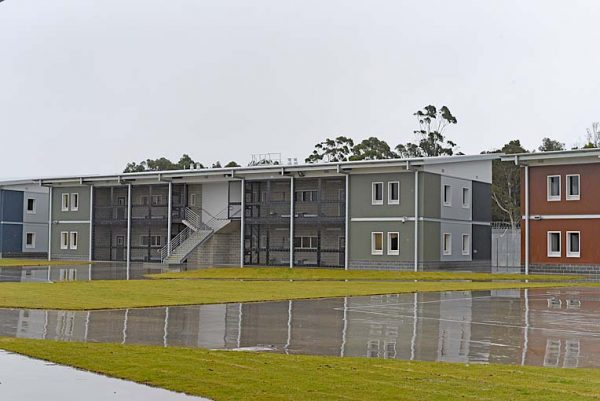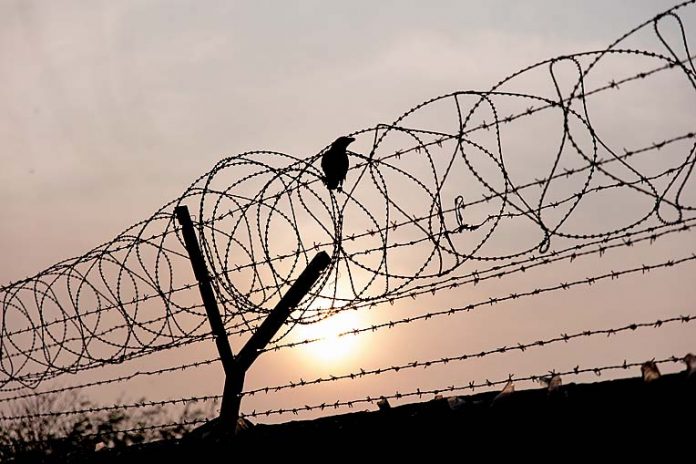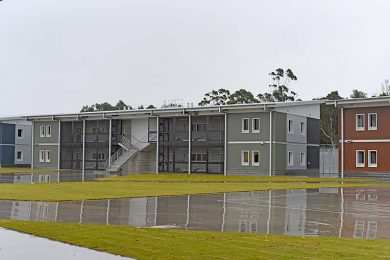
REVELATIONS have emerged some inmates released from Mount Gambier Prison cannot be forced to return to their place of residence despite a long-standing departmental agreement.
Department for Correctional Services (DCS) has confirmed the agreement that “all prisoners” are returned to their place of residence is not mandatory or enforceable for those released without conditions.
The issue has sparked calls for an in depth study into the impact the prisoners’ release has on the Mount Gambier community.
It is understood the issue of released prisoners settling in Mount Gambier is placing pressure on police resources.
The department says it cannot track the movements of prisoners who are released without conditions and has no statistics over how many inmates have made the Blue Lake city their home.
Mount Gambier Prison has mushroomed to become one of the state’s largest correctional facilities, which now has the capacity to house 650 low to medium security prisoners.
According to sources, the department may assist released prisoners with a bus ticket but they are not made to get on the bus and return home.
But “all sex offenders” – no matter what prison they finished their sentence at – were released from the Adelaide metropolitan area.
Correctional Services Minister Corey Wingard yesterday declined to weigh into the issue when approached by The Border Watch.
However, Shadow correctional services spokesperson Lee Odenwalder said the safety of the community must be a priority.
“Access to services like health and housing is vital for offender rehabilitation and integration back into the community,” Mr Odenwalder said.
“But of course, safety of the community is always paramount and residents need to know they are not being put any unnecessary risk.”
He said this issue had been canvassed by the Department for Correctional Services in the past.
“However, Mount Gambier Prison has experienced substantial expansion in recent years, so it may be worth looking at these matters with a fresh eye,” Mr Odenwalder said.
Member for Mount Gambier Troy Bell yesterday called for a long-term study to examine the impact of the prison on the city.
He revealed this was an issue that had been raised with him “on many occasions” by community members.
“Continual reassurances have not been backed up with statistics, so it is difficult to determine whether it is fact or opinion that more people are choosing to stay in our region after their custodial sentence has been completed,” Mr Bell said.
However, Mr Bell – who campaigned heavily against the prison expansion – said he believed that once a prisoner had served their time they were free to go about their business so long as they were complying with any parole conditions.
“However if we are seeing an increase in people staying in our region once released from the Mount Gambier Prison, I’d like to know what support services are in place to assist those people to safely integrate back into our community,” he said.
“As this is a continuing concern for residents, I would like to see a long-term study completed by the department to examine these issues more closely and provide actual facts and data around the release of prisoners.”
According to a Department for Correctional Services website, upon release prisoners were “expected” to organise their own transport.
“DCS staff may be able to assist with getting a bus ticket or calling a taxi. Prisoners should wait at the gatehouse for family to collect them,” the website said.
“Prisoners released from a regional prison can have help to return to Adelaide.”
In a statement provided to The Border Watch, a department spokesperson confirmed the agreement did not apply to some prisoners.
The department was unable to provide the percentage of inmates who do not return to their place of residence.
“The department’s agreement is that all prisoners who are released from Mount Gambier Prison are returned to their place of residence,” the spokesperson said.
“DCS assists all prisoners where possible to return to their place of residence.
“All sex offenders, no matter what prison they finish their sentence at, are released from the Adelaide metropolitan area. If they reside outside of this area, the department will assist them to return to their place of residence.”
The spokesperson said the department’s priority was always community safety.
“DCS’s exit process is focussed on the identification of strategies and community based resources to assist the prisoner in preventing re-offending,” the spokesperson said.
“Every prisoner – who is released from Mount Gambier Prison -has an agreed plan to assist them in getting back to their place of residence (if they’re not from Mount Gambier).”
Mount Gambier Prison is now the second largest correctional facility in the state following the completion of a $61.8m expansion of the Moorak facility.
The state’s only privately operated correctional facility, the prison now houses up to 653 low to medium security prisoners following the construction of a 160 bed residential style prisoner accommodation complex.
At the expansion opening last year, Minister Wingard described the expanding prison as a “jobs generator”.
Mr Wingard also said at this time there were no plans to further expand the facility.
A cluster of expansions has been rolled out at the prison in recent years to alleviate over-crowding in the state’s prison system.
Mr Wingard downplayed concerns the jail expansion may be luring associates and the families of inmates to settle in Mount Gambier.
The expansion includes a new support and education building and an extension to the industries building, as well as a visiting centre, medical centre and video conferencing suites.
Prisoners are also enjoying an expansive new gymnasium and indoor sports centre at the site.








